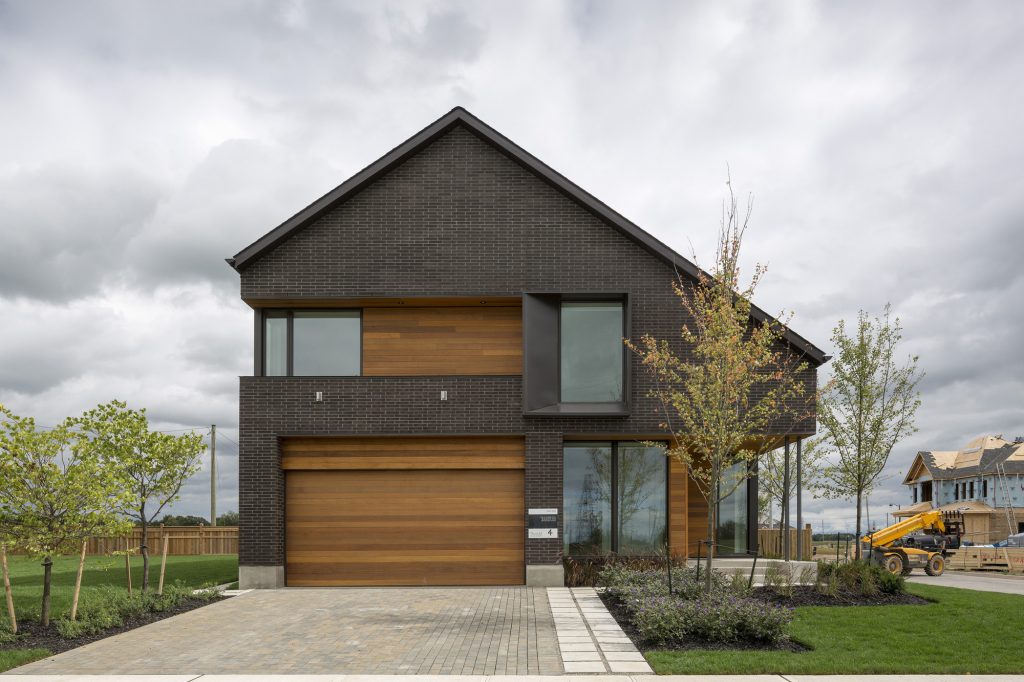Summary
– Active House: properties
– Active House and home automation
– Innovations of the active house
– Active house: buying advice
An active house is a house that produces more energy than it consumes. It is based on the principles of a passive house.
Active house: properties
An active house is a passive building equipped with means of energy production. An active house is also called Bepos (positive energy building).
To produce more energy than a house consumes, the first rule is that it should consume little power. The second is to produce energy. So to be Bepos, the construction must have the characteristics of a passive house with:
– an excellent thermal insulation (with suppression of thermal bridges);
– an airtightness;
– double-flow ventilation and a Canadian well;
– low consumption household appliances;
– an optimized orientation of the house;
– The use of efficient materials with low GHG emissions.
In addition to this, energy production is also included:
– photovoltaic electricity production (solar panels) ;
– solar water heater;
– possibly a small wind turbine.
The Canadian well also makes it possible to recover the calories of the ground. For a healthy house, it is necessary to have an air renewal. This item is very energy-consuming.
The double-flow ventilation allows recovering the calories of the air, which is evacuated out of the house. The sun’s energy is also captured and stored by the construction materials (walls, roof, windows).
Note: to calculate that a house is active, we consider the energy used by the materials that make it up amortized over the life of the building.
Active house and home automation
The first active houses are currently being built. The current and future technologies will allow multiplying this type of housing.
In addition to insulation and energy production, the active construction can be helped by new home automation technologies that manage several areas:
– switching on household appliances according to the production of solar electricity;
– opening or closing shutters according to the season to let the sun in or out
– management of the ventilation speed;
– management of lighting in time and intensity;
– consumption monitoring dashboard;
– management of storage or injection into the network;
– programmable temperature management for each room;
– management of the refrigerator temperature.
Good to know: this management can be done via your smartphone.
The innovations of the active home
Current and future technologies will allow this type of home to multiply. Soon, windows and walls will also produce energy, making this type of house more accessible.
An active house implies an energy production superior to what is consumed. This energy can be:
– stored for later use;
– injected into the electrical network;
– used to recharge a car or an electric bicycle, for example.
Today, electronic devices are used to regulate decentralized production. They will soon be integrated into the inverters of photovoltaic installations.
Active house: buying advice

The cost of an active house is that of a passive house with, in addition, the cost of energy production.
The extra cost of a passive house is estimated at 5 to 15%, mainly due to the construction materials (thicker insulation, double flow, efficient boiler…).
For an active house, it is necessary to count 10% more. But this extra cost must be minimized because
– the standards tend to go towards meager consumption and active houses;
– there is a return on investment due to the energy savings made;
– the resale of a passive house is easier and better valued;
– the use of these techniques in more significant numbers lowers their price;
– the standards will progressively impose Bepos houses.
The return on investment is difficult to evaluate even if 10 to 12 years seems a reasonable figure. Indeed, the most efficient houses produce more than 8000 kWh of energy while consuming only 4000 kWh today: the surplus can even be sold on the network!
The price depends on the current subsidies and will probably be equivalent to the price of purchased electricity by 2021.
Note: the price of solar panels has been divided by 5 in five years. Remember to find out about the actual prices by consulting specialized sites.